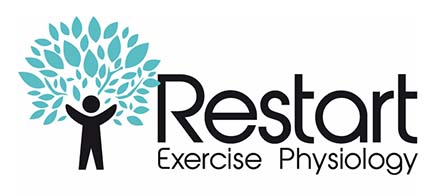Exercise can be a hotly contested subject. Much like finding the best foods and nutrition for you as an individual, the perfect exercise routine for one person is unlikely to be the perfect routine for another. We’re all different, so it makes sense to approach exercise with an open mind.
That said, there are some exercise myths still circulating today that are not only untrue, but can hinder the results of your exercise regime. How? Mostly by stealing your focus and steering you in the wrong direction.
Here are our top 7 exercise myths worth putting to bed for good.
1. You should hurt after exercise
A bit of soreness or muscle fatigue after an intensive workout is normal, but anything painful or excessively sore may be a sign you’re pushing too hard.
It’s also important to note, muscle soreness typically occurs 1-3 days after exercise, not immediately after. This is because the soreness you feel is caused by micro-tears in muscle tissue being repaired in the days following an intense workout. The soreness comes from a combination of inflammation and the immune system’s response to healing the damaged tissue. Point being, if you’re very sore immediately after a workout, and you haven’t worked out in the 3 days prior, you may need to take a break or slow down a little.
Also, keep in mind, you have a higher chance of being sore after trying a new exercise. So, if you’re constantly switching up your exercise routine, you’re much more likely to feel a little pain and tightness in the days following.
2. Strengthening exercises are only for people who want bulky muscles
Did you know after around 40 years old our bone density begins to decline at around 1% per year? As bones get more fragile, they are more likely to fracture after even a minor fall. Age is one factor impacting bone density; inadequate nutrition and inactivity are additional factors.
The good news is strengthening exercises, e.g. lifting weights, can help build bone density. Resistance exercises can kick bone-forming cells into action. The result is stronger, denser bones. Resistance workouts also enhance strength and stability. This means more mobility today and less chance of falls and fractures later down the line.
3. If you stop exercising, your muscle will turn into fat
This is of course another exercise myth. Fat cells and muscle cells are different biological structures altogether and are not interchangeable. Sure, with less physical activity, muscle cells lose mass and shrink, and with less calories burnt day to day, fat cells expand, making the body look softer. However, these are two separate processes.
If you start gaining weight fast after you stop exercising, it’s most likely because you’re eating the same amount (or more) than you were previously, but you are burning fewer calories.
4. You have to sweat for exercise to work
Sweating is your body’s in-built cooling system. Our body’s ability to regulate its temperature is determined by a variety of factors, including body weight, temperature, humidity levels, current fitness level etc. This is why people who are more physically fit often sweat sooner, because their bodies’ cooling system is conditioned to activate and self-cool faster. This isn’t always the case, but it is common.
If you don’t sweat during exercise, you might not be raising your core temperature to the point where sweating needs to be induced. You might also be dehydrated. If it’s the latter, try to drink more water before and during your workout.
5. You should only do cardio if you want to lose weight
This exercise myth needs to be dispelled immediately. We all need to do cardio exercise to keep our heart healthy. And considering heart disease is the leading cause of death in Australia, we should take heart health very seriously.
If you’re avoiding cardio because you don’t want to lose weight, consider doubling your cardio up with resistance training. For instance, using a rowing machine in combination with a push-up or body weight squat.
6. You have to go to the gym to exercise
This is a far less common myth today, but it still circulates. No, you don’t need to go to a gym to exercise. Often it helps because all the equipment is accessible and you feel motivated to make the most of it considering you traveled there and you’re surrounded by others doing the same thing. This doesn’t mean you need a gym.
Go for a run, a walk, a ride. Join a sporting team or an outdoor club, e.g. hiking club. Do body weight exercises – push-ups, squats, bridges etc. Install a chin up bar at home or find a local park with exercise equipment so you can do pull-ups, leg raises, dips etc. Purchase a set of dumbbells or kettlebells or even grab some cans from the pantry to do weight exercises.
The only question worth asking is, are you self-motivated enough to not need the gym?
7. You should always have supplements, protein shakes or sports drinks after exercise
Many studies have been done on the optimal time to consume protein and other supplements. While you can find published papers supporting consumption of such products at various times of the day to enhance results and optimise recovery, it is not necessary to consume supplements or protein shakes in order to improve your overall fitness.
Want some guidance on the optimal exercise routine for you? Book an appointment with one of our Exercise Physiologists today.
Disclaimer
All information is general and is not intended to be a substitute for professional medical advice. Restart Exercise Physiology can consult with you to confirm if a particular treatment or procedure is right for you.

0 Comments